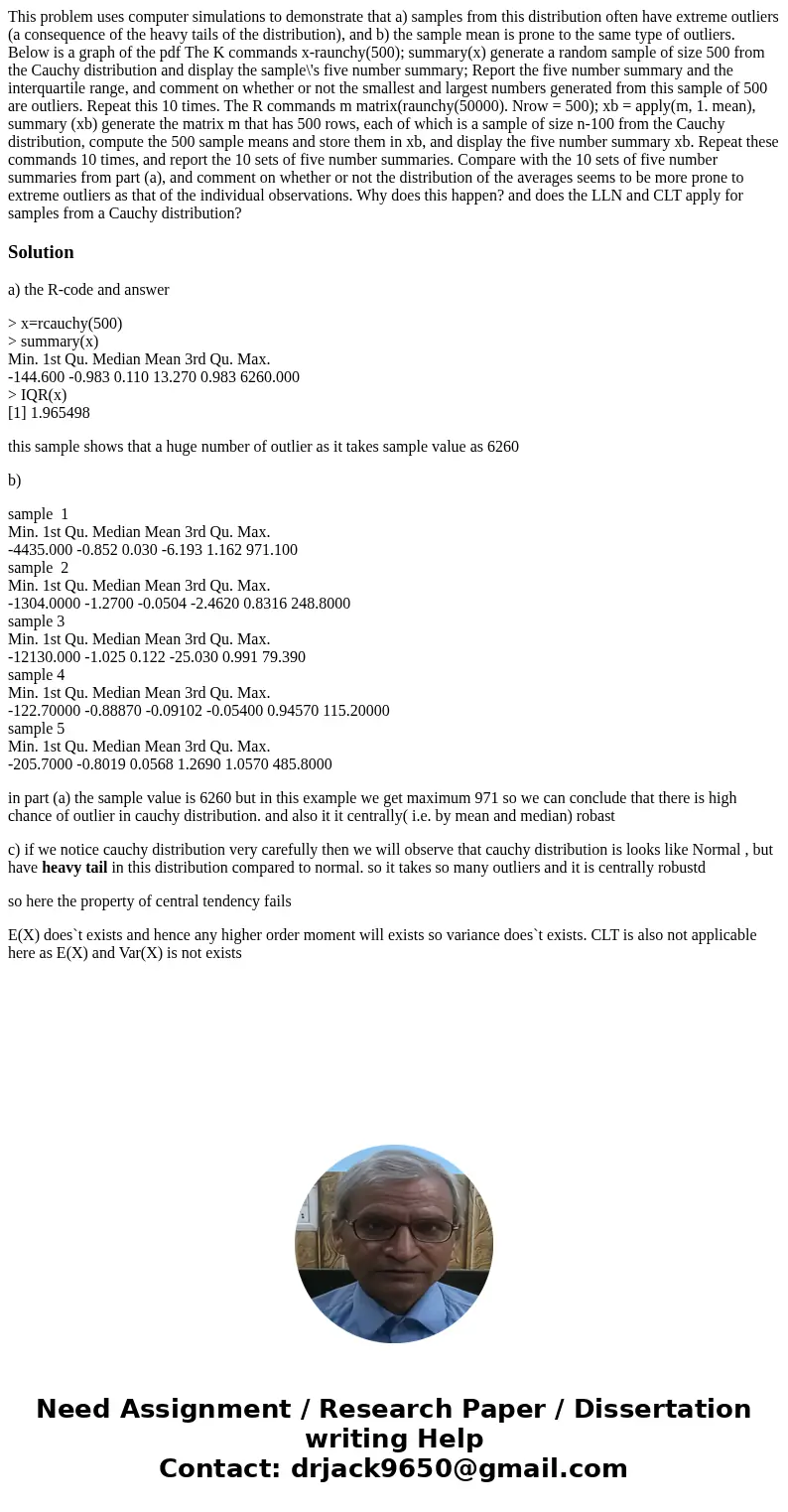This problem uses computer simulations to demonstrate that a
Solution
a) the R-code and answer
> x=rcauchy(500)
> summary(x)
Min. 1st Qu. Median Mean 3rd Qu. Max.
-144.600 -0.983 0.110 13.270 0.983 6260.000
> IQR(x)
[1] 1.965498
this sample shows that a huge number of outlier as it takes sample value as 6260
b)
sample 1
Min. 1st Qu. Median Mean 3rd Qu. Max.
-4435.000 -0.852 0.030 -6.193 1.162 971.100
sample 2
Min. 1st Qu. Median Mean 3rd Qu. Max.
-1304.0000 -1.2700 -0.0504 -2.4620 0.8316 248.8000
sample 3
Min. 1st Qu. Median Mean 3rd Qu. Max.
-12130.000 -1.025 0.122 -25.030 0.991 79.390
sample 4
Min. 1st Qu. Median Mean 3rd Qu. Max.
-122.70000 -0.88870 -0.09102 -0.05400 0.94570 115.20000
sample 5
Min. 1st Qu. Median Mean 3rd Qu. Max.
-205.7000 -0.8019 0.0568 1.2690 1.0570 485.8000
in part (a) the sample value is 6260 but in this example we get maximum 971 so we can conclude that there is high chance of outlier in cauchy distribution. and also it it centrally( i.e. by mean and median) robast
c) if we notice cauchy distribution very carefully then we will observe that cauchy distribution is looks like Normal , but have heavy tail in this distribution compared to normal. so it takes so many outliers and it is centrally robustd
so here the property of central tendency fails
E(X) does`t exists and hence any higher order moment will exists so variance does`t exists. CLT is also not applicable here as E(X) and Var(X) is not exists

 Homework Sourse
Homework Sourse